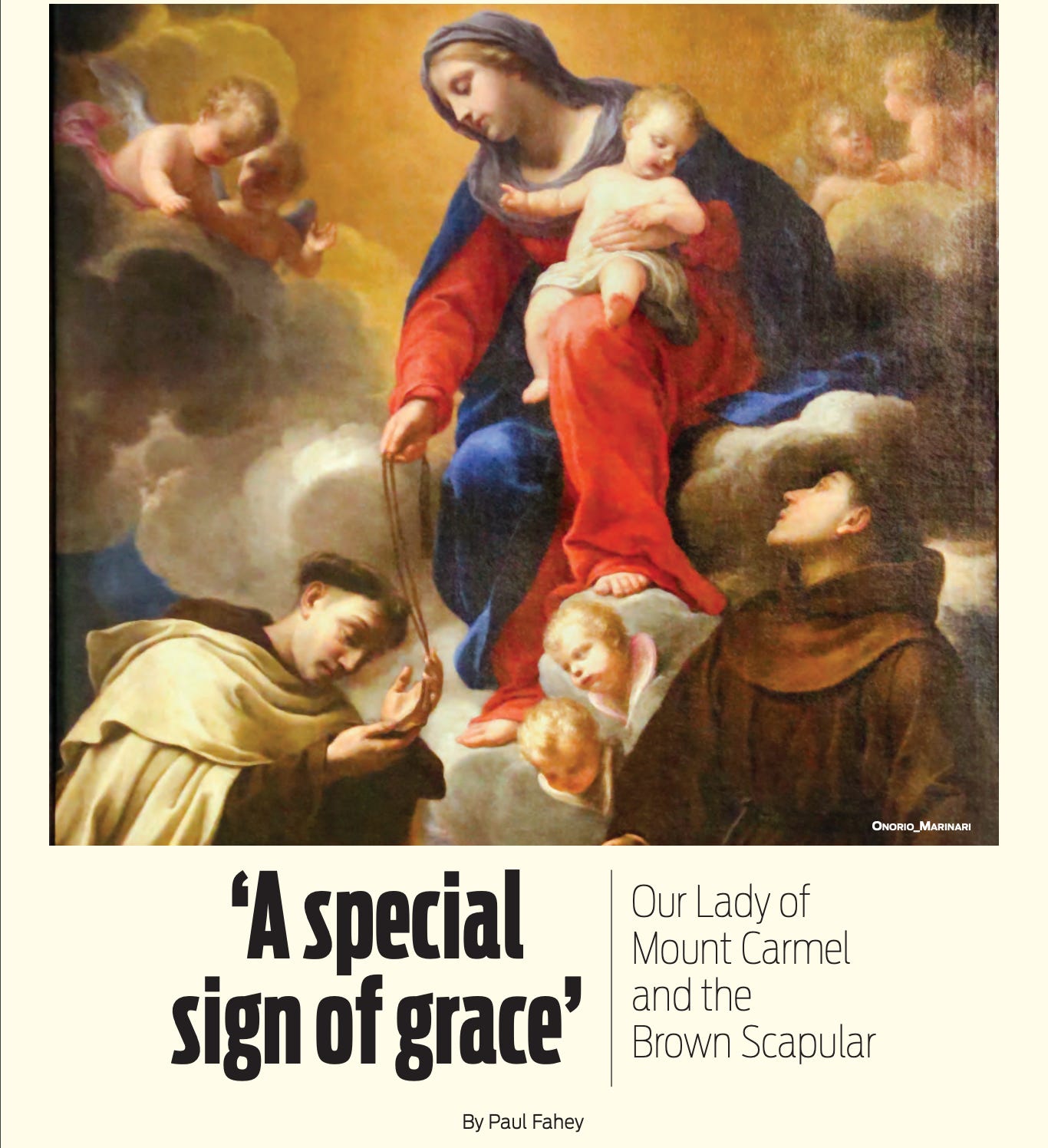A couple of months ago I had the privilege to write an article for the Marian Helper, a magazine from the Marians of the Immaculate Conception. The topic I was asked to write about was Our Lady of Mount Carmel and the Brown Scapular.
This is ironic because I have never once worn a Brown Scapular and while I have a lot of respect for some Carmelites, I knew next to nothing about their order or their history.
When I first started researching the Brown Scapular devotion—I cringed. I found statements like:
“You must wear it over the shoulder so that one part hangs over your chest and the other side hangs over the back. Both parts cannot be carried in the front or the back, otherwise, the wearer runs the risk of not receiving the promise.”
You know, as if God will not give us his grace, if God will not save us, because we wore a piece of cloth incorrectly.
Then I found this line:
“We must understand that by wearing the Scapular we show our consecration and devotion to the Blessed Virgin. Our Blessed Mother cannot be pleased in any one who out of vanity or fear takes it off whenever it is not convenient to wear it.”
Can we not speak for Mary? Can we not use Mary to shame others?
So some of the stuff I found was gross. However, this is a devotion that the Church has approved and endorsed for centuries, so it can’t be all bad. So I went to magisterial sources.
The post-conciliar Church, while wholeheartedly encouraging expressions of popular piety, also desires that these devotions be purified of any imperfections. Saint John Paul II taught, popular piety needs to be “continually evangelized, so that the faith which it expresses may become an ever more mature and authentic act” (Vicesimus Quintus Annus 18). This includes devotion to the Brown Scapular.
For example—as I saw from the sources I read online—it would be easy to approach the Brown Scapular devotion in a superstitious way. The Catechism of the Catholic Church teaches that attributing “the efficacy of prayers or of sacramental signs to their mere external performance, apart from the interior dispositions that they demand, is to fall into superstition” (CCC 2111).
This kind of thinking can be found whenever the promises of the Brown Scapular are presented as resting on the performance of the devotee, whether that is on them saying the prayers correctly or wearing the scapular exactly as instructed, rather than on God’s free gift of grace.
Superstition is a subtle, but extremely harmful, spiritual sickness. By reducing prayer to mere external performance, it reveals a hidden desire for control over spiritual things rather than humility and contrition. Throughout the Old Testament, God warns his people against sacrifices offered without a corresponding interior repentance. God’s people thought that they could control their own forgiveness and salvation by external rituals rather than having humble and contrite hearts.
Superstitious piety also distorts God’s revelation of himself. If God’s grace is dependent on someone saying the right words or wearing the scapular exactly the right way then God is ultimately more concerned with one’s external performance than their interior faith. If God withholds his love and grace because his child does not perform the right action, then he is more like a tyrant than a Good Father.
In any case, I ended up pulling some excellent points form the Church’s Directory on Popular Piety and the Liturgy that was published in 2001 and wrote a brief history and catechesis on Our Lady of Mount Carmel and the Brown Scapular. That document does a great job explaining the not-superstitious way to understand this devotion, so sharing that teaching became a goal of my article.
You can access the magazine online here. My article is on page 18.




